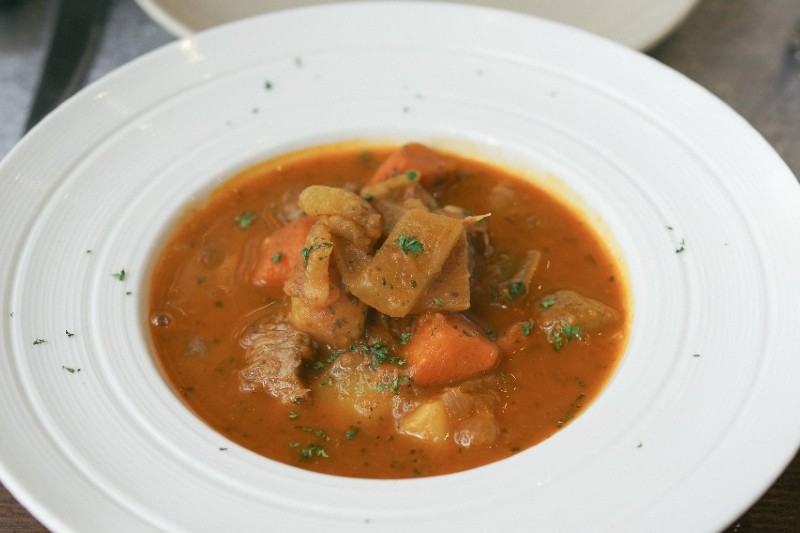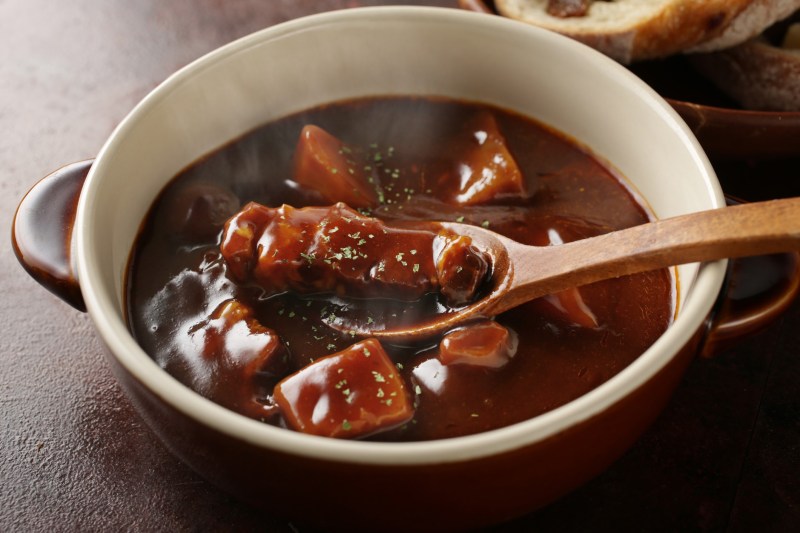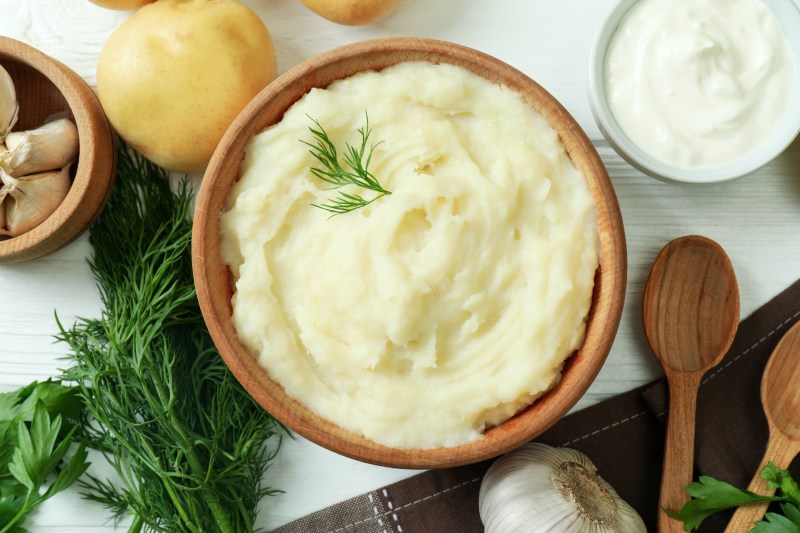
When one thinks of hearty spring dishes, beef stew is sure to be at the top of the list. The simplicity and deliciousness of this one-pot meal is what have made it a go-to meal for centuries. It can be made in a standard stock pot, Dutch oven, or cast-iron cauldron hanging over a campfire.
Whatever vessel you decide to cook beef stew in, it’s a good idea to make a lot of it. The leftovers keep for a long time, and it’s one of the few dishes you can prepare where the re-heats taste as good as the first cook. Combined with a crusty baguette to sop up the flavorful stock, there are few foods more comforting than this.
Beef stew recipes are pretty standard across the board, but we wanted to kick it up a notch and deliver a recipe that you’ll want to turn to every time you make this winter delight. That’s why we teamed up with Certified Master Chef (CMC) Sean Andrade. A quick note, there are only around 200 Certified Master Chefs worldwide, so we trust he knows his stuff. Chef Sean has this to say about beef stew.
“Beef stew is a wonderful mid-week meal that is both nourishing and warming. This beef stew recipe can be paired with a beautiful bottle of French Burgundy and a crusty baguette to complete this easy-to-prepare, single-pot meal. This stew can be easily made ahead of time and actually tastes better the next day. The stew reheats beautifully on the stovetop, oven, or in the microwave.”
Beef stew recipe

By Certified Master Chef (CMC) Sean Andrade and Executive Chef-Owner of AWG Private Chefs in San Francisco
“Don’t cut corners on the time it takes to brown the meat. Also, try not to overcrowd the pan or push the meat around the pan too often,” Chef Andrade told The Manual. “The longer the meat stays in one place and in contact with the pan, the better the browning you will get. Brown food tastes great and enriches your depth of flavor! If you wish to make this recipe gluten-free, simply omit the flour, remove the lid after 90 minutes of cooking, and increase total cooking time by 30-45 minutes to help naturally thicken the stew by evaporation.”
Ingredients
- 3 pounds boneless USDA Choice beef chuck roll (excess fat trimmed, then cut into 1-inch cubes)
- 1 1/2 teaspoons freshly ground black pepper
- 2 teaspoons kosher salt
- 3 tablespoons extra virgin olive oil
- 2 cups cabernet sauvignon or French Burgundy
- 6 cloves garlic, diced fine
- 2 tablespoons tomato paste
- 1/4 cup all-purpose flour
- 1 medium red onion (cut into 1-inch chunks)
- 1 medium Vidalia onion (cut into 1-inch chunks)
- 2 cups beef bone broth
- 1 tablespoon red wine vinegar
- 1 tablespoon balsamic vinegar
- 2 cups water
- 2 bay leaves
- 1/2 teaspoon dried thyme (or 8 sprigs of fresh thyme, de-stemmed)
- 4 large organic carrots (peeled and cut into 1 1/2-inch chunks on a diagonal)
- 3 large stalks organic celery (cut into 1-inch chunks on a diagonal)
- 1 pound heirloom pebble potatoes or small red skin potatoes (cut into 1-inch chunks)
Method
- After cutting the beef, pat it dry with paper towels, and then generously season with kosher salt and pepper.
- Sear the beef in 1 tablespoon extra virgin olive oil in a heavy-bottomed oven-proof Dutch oven over medium-high heat.
- Heat the pan until the oil begins to shimmer.
- Brown the meat in small batches to avoid crowding and steaming.
- Drain the meat onto a paper towel-lined side plate.
- Add in the onions and both kinds of vinegar, then stir to deglaze the pan, scraping up the browned bits with a wooden spatula or wooden spoon.
- After 3 minutes of cooking, add in the garlic and continue cooking for another 2 minutes.
- Add tomato paste, continue cooking for 2 minutes, and add in the celery.
- Return the beef and all the juices to the pot and whisk together until combined.
- Add in bay leaves, thyme, beef broth, wine, and 1 3/4 cups water, and bring to a medium simmer.
- In a small bowl, make a slurry of the flour and 1/4 cup water, and then add the slurry to the simmering liquid.
- Cover the pot with a lid and then transfer it to a preheated 325-degree Fahrenheit oven and cook for 2 hours.
- After 2 hours, remove the lid and continue cooking for another 45 minutes.
- Just prior to serving, remove bay leaves, taste the stew, and adjust salt and pepper to your liking.
Sides that pair well with beef stew

If you don’t intend the beef stew to be a meal on its own, then here are some side dishes that complement it without being too heavy for the hearty dish.
- Mashed Potatoes: This is a classic pairing, as creamy mashed potatoes soak up the delicious stew juices.
- Rice: Another great way to soak up all the stew goodness, brown rice, wild rice, or even quinoa are the perfect choices with beef stew.
- Bread: We mentioned bread above, but here are more options in the bread category. Crusty bread is perfect for dipping into your stew. Try a French baguette, sourdough bread, or even dinner rolls.
- Salad: A light and refreshing salad is a great way to balance out the richness of the beef stew. A simple green salad with a vinaigrette dressing is all you need, but you could also add some chopped vegetables or fruit for extra flavor and nutrients.
- Roasted Vegetables: Roasted vegetables are a healthy and flavorful side dish that goes well with beef stew. Roast some carrots, Brussels sprouts, or broccoli.



